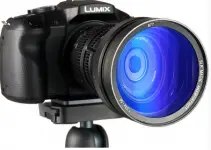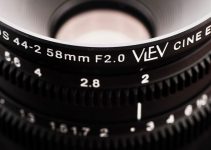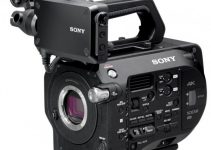The last few years have been flying away, and in the blink of an eye almost a decade went by. It was in 2012, in fact, when Canon expanded the newborn (at the time) EOS Cinema line by adding the C500. Intended to be the flagship of cinematic cameras, the $30K price tag that came with it did stop many filmmakers from considering it for their indie productions.
After that, a few years later, the top spot in the EOS Cinema realm has been taken by the mighty C700. But the C500 is coming back with a bang: the C500MKII has been released and it picks up a lot from the elder and bigger counterparts. Even while the pandemic roams around LensProToGo has made a nice video on the matter, highlighting some important things you should know about it. Let’s take a look!
It seems that Canon has learned from their mistakes since the C500 packs a much tighter body than the C700FF and has a less steep price. Gone is the behemoth of a camera body: the form factor that is much closer to the lower end of the Cinema line, your C100s, C200s, and so on.
We’ve got a similar structure on the insides too, the menus are almost identical at what you’d find on a C200, while the external buttons are a nice and quick way to access almost any setting you may need on the fly.
Unlike the C100, but much like the C200, the body of the C500 II introduces a modular concept. The core is there from the start, as you don’t need any of the addons for the basic functionality of the camera: all your recording options are there already. What you gain instead are multiple XLR ports, larger battery options, viewfinder, and so on.
Unlike the C200, though, the C500 II Raw capabilities are on full throttle. This camera has the full Raw codec we’ve seen on the C300 and some high-quality internal compressed codecs like the XF-AVC that will extend your shooting time up to 80 minutes on a 256GB card. For comparison, when shooting RAW, you get 16 minutes on the same card.
What really sets the camera completely apart from the little, but older, siblings is the sensor. The camera boasts a full-frame sensor, just as the C700FF, parting from the S35 chip we found on previous cinema cameras. What is the advantage of the bigger sensor? Wider field of view, better dynamic range, and better low light performance.
The chip is natively a 5.9K one, meaning that when you downsample to 4K, you get a nice and crisp image. Are there no cons to it? Obviously, it can’t be like that: lens choice is going to be harder even if lens makers are trying to catch the train of high-resolution full-frame sensors that are appearing across the board on various manufacturers lineups.
You may crop in camera if you want, but that’s not a great feature since you’re effectively cropping the sensor and losing resolution.
One important note that will be more than welcome to the vast majority of filmmakers is the user-serviceable interchangeable lens mount. There are not many options, it’s Canon EF, Canon EF with lock, and PL, but that is a very good start. What instead is a weird choice on a cinema camera is the inclusion of an in-camera stabilization, but a digital one.
This IS will create distortions and artifacts similar to the warp stabilizer in Premiere Pro. Really not something you’d expect on a Cinema camera.Those are some of the most important things you should know about this camera, there’s more obviously, but it’s a good starting point if you’re considering it as a workhorse for your next gig.
[source: LensProToGo]
Order Link:
Canon EOS C500 Mark II 5.9K Full-Frame Camera Body (B&H)
Disclaimer: As an Amazon Associate partner and participant in B&H and Adorama Affiliate programmes, we earn a small comission from each purchase made through the affiliate links listed above at no additional cost to you.
Claim your copy of DAVINCI RESOLVE - SIMPLIFIED COURSE with 50% off! Get Instant Access!





